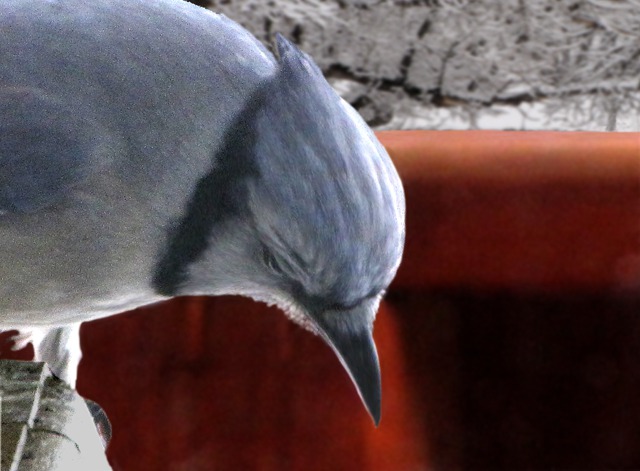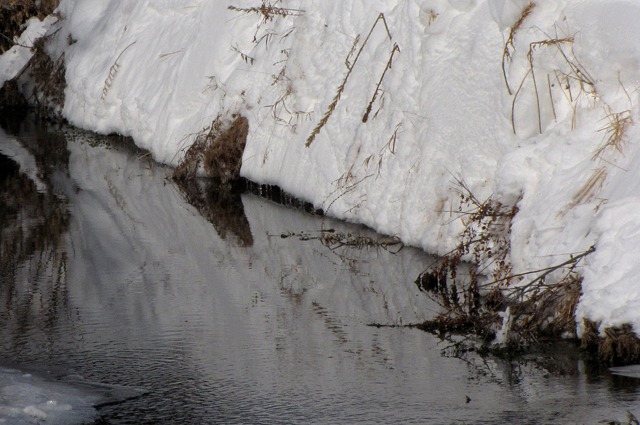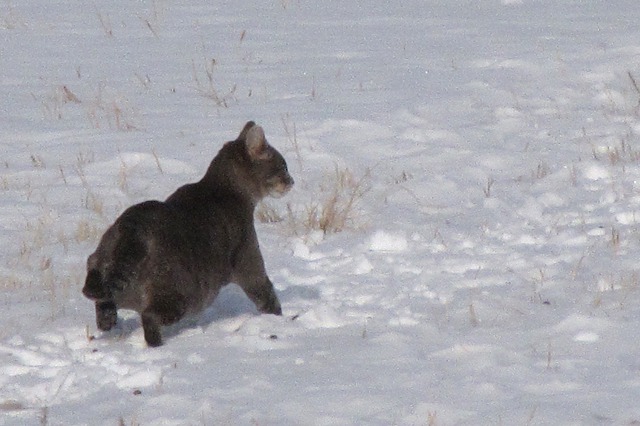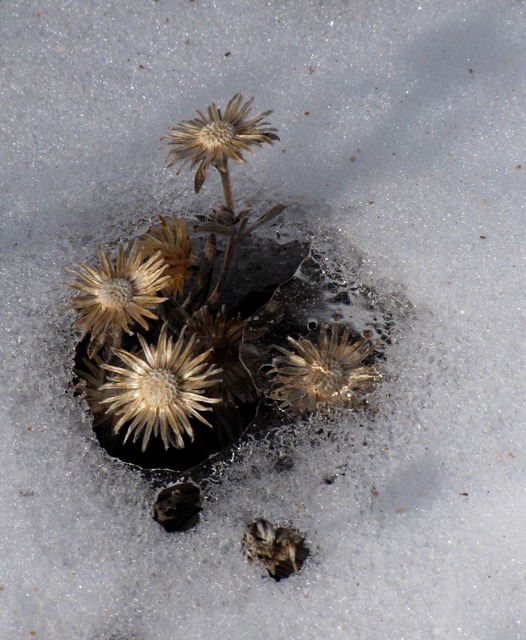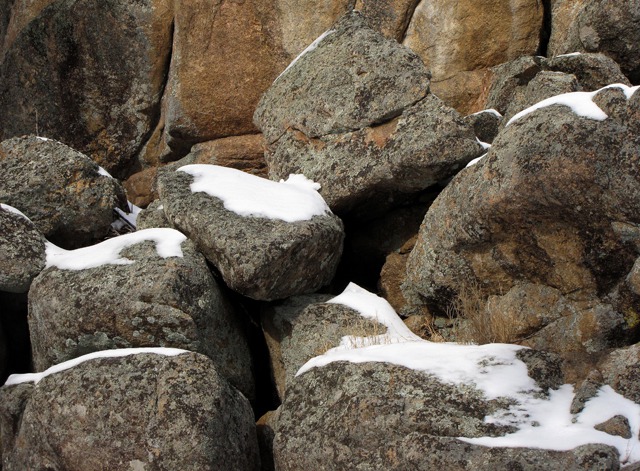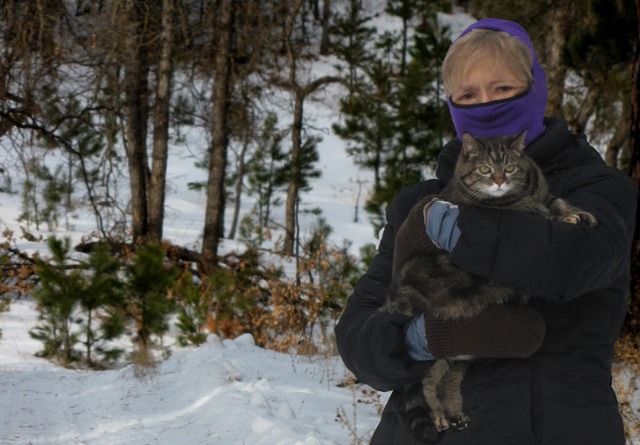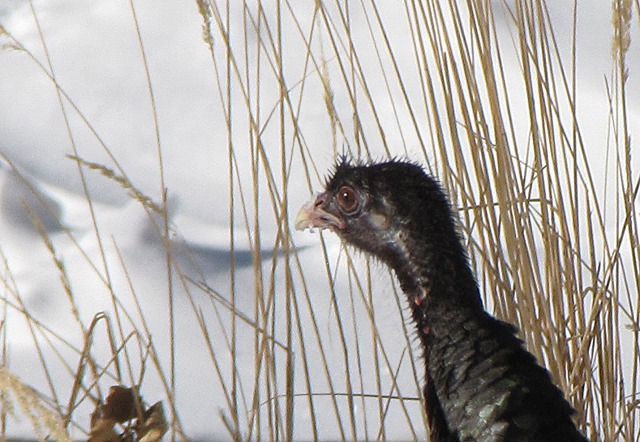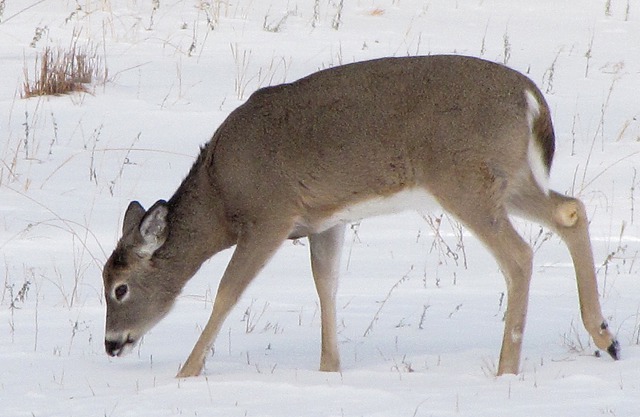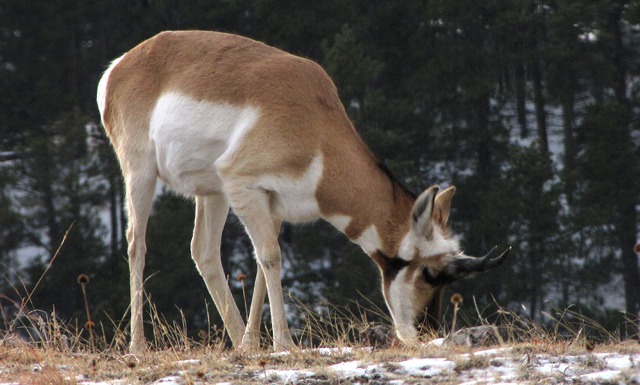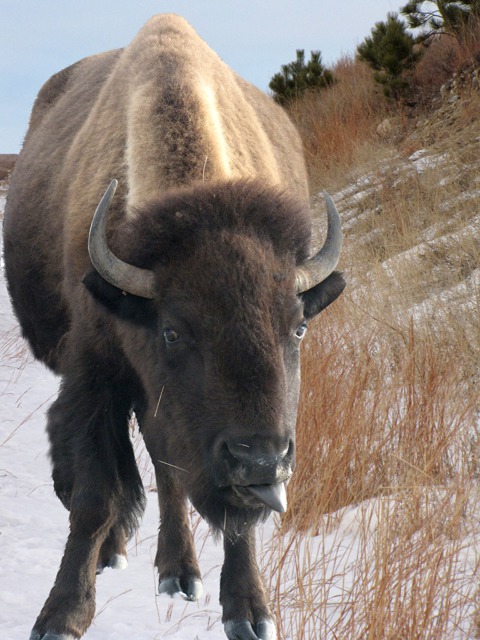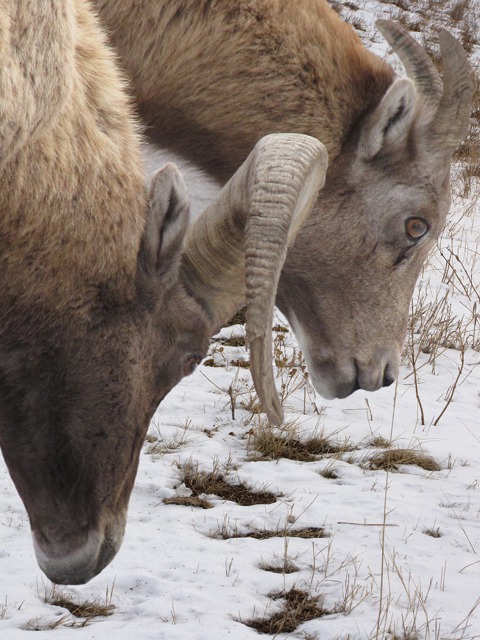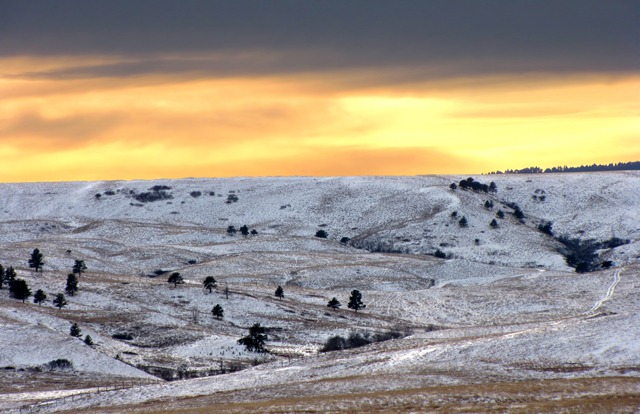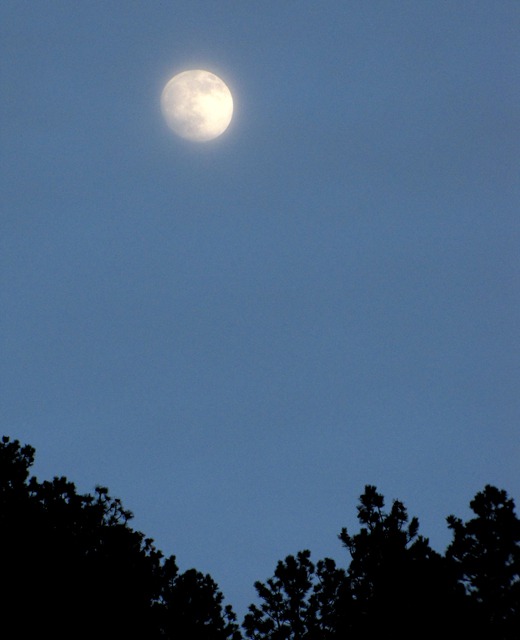After the Christmas Blizzard 2009
When we hit one point on a two-track back road after busting a few small drifts, we decided that discretion was in order, since there's no cell phone coverage anywhere out there and only one rig had used the road since the blizzard. So we swung into a wide spot we call "deer crossing" because we'd watched a big buck chase a small band of does back and forth across the road at that spot for nearly half an hour a year before during the rut.
Louise and the Furry Purry got out for a stretch break, even though the temperature was still hovering at freezing. Louise took Furry Purry for a short cat hike back down the snow-covered road we were on, in a combination of walk and carry that, as time went on, became more carry than walk as the Furry Purry's feet got cold. I finally caught up with them about a quarter mile down the road, both looking ready to get back in the rig.
Chowing While the Chowing's Good -- One thing about going out into the woods after a blizzard, the denizens are also out, grabbing whatever nourishment they can before the next storm closes in. If you don't mind bashing through the odd snowdrift, there's plenty of opportunity to watch animals focus on chowing down and not paying a whole lot of attention to someone with ulterior photographic motives. Even the normally elusive wild turkeys are more intent on staying alive than hiding.
White-tail deer are relatively abundant in the Park, and the varied topography, from deep woods to wind-swept exposed southern slopes means they have both cover and access to food. It's common to see them out during the day in winter. We watched this one work its way across an open meadow off the road after we turned around. Antelope are also relatively common in certain areas of the Park, and we saw over 50 during the late afternoon on the Wildlife Loop. It was funny to us that Furry Purry watched the ones that were farthest away (several hundred yards) intently, but ignored the ones that were less than 100 yards away. Maybe at the longer distance, they looked more like mice. Bison are also common in the Park -- it's not a pure blood line herd like the one further south in Wind Cave National Park, but they are still a lot of fun to see -- and hear, and smell. They often congregate close to the road in winter -- they have a particular fondness for the minerals on the roadbed left behind from the "salt" they use to de-ice the tough spots on the road.
One fairly large bull blocked the path of a RAV-4 that wanted through the herd, and no amount of horn-blowing would take the bull from his minerals. Finally the RAV-4 made a wide detour and huffed off. The bull was unimpressed by their sense of urgency.
The young bison in the photo below seemed to also hold me in a little contempt, sticking his tongue out at me as I shot him from the other side of the rig with my telephoto.
Rocky Mountain sheep are not nearly as common as other animals in the Park, so it was a thrill to see a ram and several of his camp followers dining on a hillside where the snow had been pushed around by the winds. I'm always amazed at the way the light plays around on cold winter evenings in the Hills --the glazed wind-swept rolling hills backed by an almost cold-tone sundown. Occasionally you get a spectacular winter sunset, but more often you can just enjoy the subtle way the light bounces off the snow-swept hills. As we headed for home, we stopped near the 1920's Game Lodge in the Park -- the summer White House for President Coolidge in 1927. Coolidge was a big fan of the Black Hills and the surrounding area.As Louise was taking a short stretch-break walk near the lodge, I caught the icy moon rising just above the ridge line. A nice way to end the photographic aspect of a good day watching the critters stock up before the next wave of storms.
Brian
text and photos copyright GoinMobyle 2009


